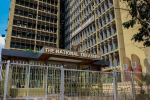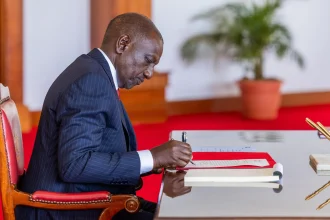In a Cabinet meeting chaired by President William Ruto at State House, Kenya’s government unveiled a sweeping array of policy reforms aimed at addressing systemic challenges across multiple sectors.
The decisions signal a robust commitment to tackling entrenched issues in healthcare, infrastructure, energy, youth employment, and governance.
These measures, rooted in the Bottom-Up Economic Transformation Agenda, reflect a strategic pivot toward accountability, private sector-led growth, and equitable development.
The Quality Healthcare and Patient Safety Bill
A cornerstone of the Cabinet’s agenda is the endorsement of the Quality Healthcare and Patient Safety Bill, 2025, a transformative piece of legislation designed to overhaul Kenya’s beleaguered health sector.
The Bill targets systemic fraud, regulatory loopholes, and conflicts of interest that have long eroded public trust in healthcare delivery.
By establishing a unified quality assurance framework, the legislation mandates rigorous licensing, registration, and accreditation for all health facilities, laboratories, and ambulance services.
At the heart of the reform is the creation of the Quality Healthcare and Patient Safety Authority, an independent body tasked with enforcing national care standards, monitoring performance, and protecting patient rights.
The bill introduces facility-level quality improvement plans and clear criteria for emergency medical services, addressing root causes of corruption and malpractice.
Analysts see this as a critical step toward realising the promise of universal health coverage, ensuring safer and more effective healthcare for Kenyans.
The move responds to long-standing criticisms of weak oversight and collusion, which have allowed unqualified facilities to operate, leaving patients vulnerable.
With public trust in healthcare at a low ebb, the bill’s emphasis on accountability and standardisation could mark a turning point, though its success will hinge on rigorous implementation and sustained political will.
Clearing Debts and Expanding Access
The Cabinet also made significant strides in infrastructure and energy, building on the success of the Road Maintenance Levy Fund (RMLF) securitisation model.
This financing mechanism has already disbursed Sh64.2 billion, settling 40 per cent of verified contractor claims across 575 contracts and 393 projects.
To further accelerate progress, the Cabinet approved an additional 40 per cent payment, bringing total settlements to 80 per cent, contingent on contractors extending final payment deadlines by 120 days.
This approach has unlocked stalled projects, improved contractor cash flow, and ensured continuity in road development, a vital driver of economic growth.
In the energy sector, the approval of Phase III of the Last Mile Connectivity Project promises to bring electricity to 180,500 households, schools, health centers, and MSMEs.
Supported by the African Development Bank and the Canada-AAD Climate Fund, the initiative prioritises underserved regions, optimising idle transformers and reinforcing strained substations.
By addressing high connection costs and weak infrastructure, the project aims to deliver clean, affordable power to marginalised communities, boosting education, healthcare, and small businesses.
The partial privatisation of the Kenya Pipeline Company (KPC) marks another bold step. By divesting government shares through the Nairobi Securities Exchange, the Cabinet aims to democratise ownership and unlock KPC’s commercial potential.
Drawing parallels with the success of privatised entities like Safaricom and KenGen, the move is expected to inject private capital, enhance operational efficiency, and position KPC as a regional energy powerhouse.
Critics, however, caution that privatisation must be carefully managed to avoid monopolistic tendencies and ensure benefits accrue to ordinary Kenyans.
Empowering Youth and Communities
The National Youth Opportunities Towards Advancement (NYOTA) Project, set to launch in August 2025, underscores the government’s focus on youth empowerment.
Targeting over 820,000 vulnerable and unemployed youth, including persons with disabilities, NYOTA offers paid on-the-job training, entrepreneurship support, and Recognition of Prior Learning (RPL) certification.
With over one million applications already received, the program’s scale is ambitious, aiming to enhance employability and access to decent work.
The On-the-Job Experience component, offering 90,000 youth three- to six-month paid placements with Sh6,000 monthly stipends, is a flagship initiative that could reshape Kenya’s labor market if effectively implemented.
On conservation, the transfer of Amboseli National Park to Kajiado County fulfils a presidential directive and responds to a petition by the Maasai community.
Executed under Article 187 of the Constitution, the phased co-management model empowers local communities while retaining national conservation oversight by the Kenya Wildlife Service (KWS).
This move, supported by National Treasury compensation for revenue losses, aims to promote sustainable stewardship and equitable benefit-sharing, though it raises questions about balancing local and national interests in conservation.
Religious Reforms and Presidential Pardons
In response to the Shakhahola tragedy, the Cabinet approved recommendations from the Presidential Taskforce on Religious Organisations.
The proposed legal framework emphasises self-regulation over state control, establishing a Religious Affairs Commission and strengthening faith-based umbrella organisations.
By setting leadership standards, reforming religious broadcasting, and promoting civic education, the reforms aim to curb exploitation while fostering tolerance and preventing extremism.
A multi-agency approach involving security, interfaith, and educational stakeholders will support implementation, though public skepticism about enforcement remains high given past regulatory failures.
The Power of Mercy Bill, 2025 introduces a structured framework for presidential pardons, modernising the system under Article 133 of the Constitution.
By enabling supervised early release for rehabilitated inmates, the bill seeks to reduce prison overcrowding, costing an estimated Sh87,600 per inmate annually, while enhancing public safety through reintegration protocols.
This reform could alleviate pressure on Kenya’s strained correctional system, but its impact will depend on transparent and equitable application.
The Cabinet’s decisions reflect a government keen on addressing systemic inefficiencies and delivering tangible results.
The healthcare reforms tackle long-standing pain points, while infrastructure and energy initiatives signal a commitment to economic growth.
Youth empowerment through NYOTA and community-driven conservation efforts align with the Bottom-Up Agenda, prioritising inclusivity.
However, the ambitious scope of these reforms raises concerns about implementation capacity, funding, and political resistance.
Privatisation, while promising, must navigate public skepticism about elite capture, and regulatory bodies like the Quality Healthcare Authority will need teeth to enforce standards.












